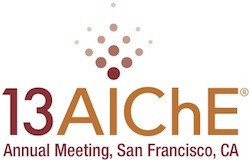

The use of ionic liquids to separate oils , proteins , and phorbol esters from biomass is a significant achievement in efficiently separating high quality jet and diesel fuels and value-added products from abundant ocean algae and other agricultural feedstock. Micro-algae and oil-seed biomass were suspended in co-solvents mixtures comprised of ionic liquids of varying polarity and polar-covalent molecules and subjected to mild heating under reflux at atmospheric pressure. Yields of bio-oils and phorbol esters extracted were determined by gravimetric analysis and HPLC , respectively. In addition , light scattering and fluorescence techniques were utilized to investigate polarization/anisotropy in the co-solvent mixture , and their effects on lipid solubility and rates of diffusion. Molecular dynamics simulations have been employed to probe the fundamental interactions between solutes (lipids and phorbol esters) and ionic liquid and polar covalent molecules in solution. Simulations are capable of predicting the mixture density as a function of composition , and compare well with experimental data. Radial distribution functions (rdfs) , potentials of mean force (pmfs) , and simulation snapshots confirm the increased aggregation between IL cations and anions with increasing methanol concentration. The aggregation behavior of triolein in IL/co-solvent mixtures was also explored. From the MD generated rdfs and potentials of mean force , we observe a clear correlation between the extent of triolein aggregation and the experimental extraction yields as a function of methanol composition. This indicates that the lipids are aggregating in these IL/co-solvent mixtures , a simulation finding that is also supported by light scattering experiments. Therefore , there is a clear correlation between the free energy of lipid aggregation and the overall extraction yield. Therefore , the dominant mechanism for the lipid auto-partitioning behavior is lipid aggregation , likely leading to the formation of micelles , which subsequently rise through the IL/co-solvent mixture via buoyancy (density difference). In addition , density functional theory (DFT) calculations using the COSMO-RS implicit solvent model and the COSMO-THERM framework are used to predict phorbol ester solubilities in IL/methanol mixtures , which are subsequently compared to experimental ester extraction results. Both experimental and simulation efforts provide an improved understanding of the relationship between molecular-level co-solvent structure and solute aggregation/solubilization , which will help in the design of tailored ionic liquid/PCM solvent mixtures to optimize lipid and ester extraction and separation.
